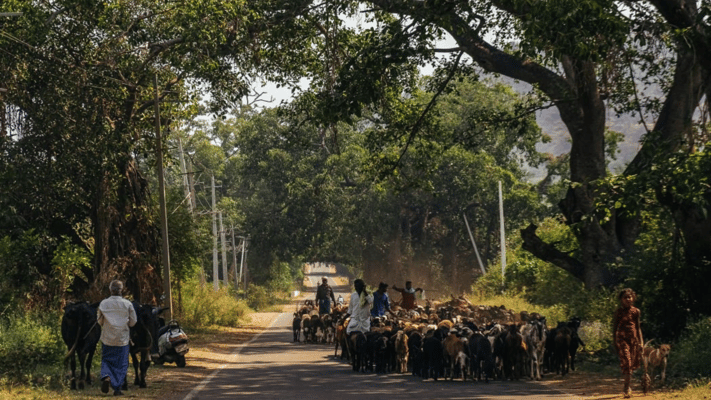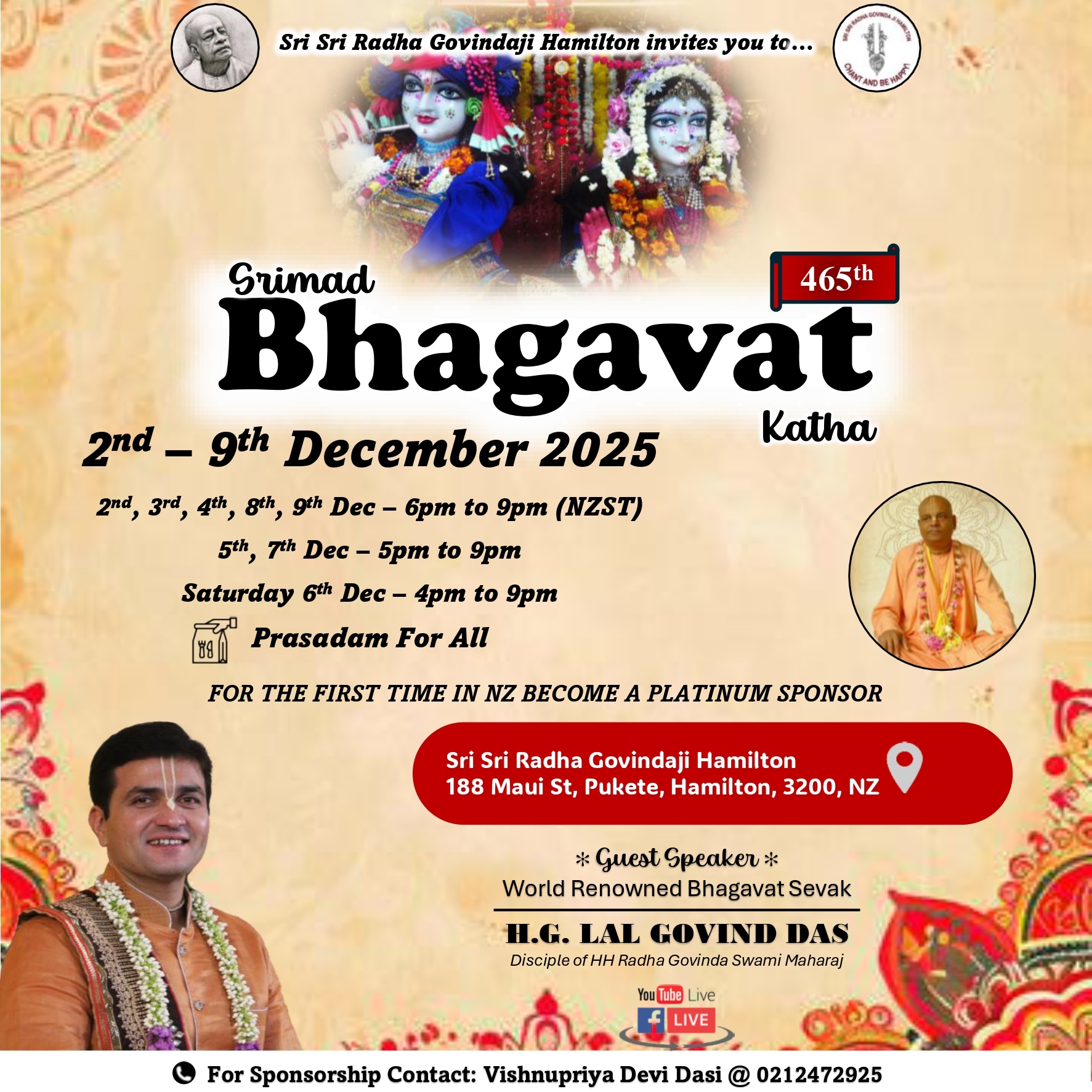Missing Pieces: A Bridge Between Two Nations

The second installment of a four-part series on Indian migration to New Zealand
Despite living in New Zealand for decades, some senior Kiwis of Indian origin feel disconnected from their adopted homeland. And yet for their children's generation and beyond, they're able to pass on stories of their South Asian heritage and fill in the gaps of the family's distant past.
As Bhanu settles down on the steps of her porch, she's balancing two plates of freshly steamed khaman and a cup of chai in her hands.
The ceiling fan is humming softly, stirring the thick evening air as she takes a first, slow sip. In this moment in her home village of Matwad, life feels peaceful - unhurried, familiar and whole.
When Bhanu first arrived in Auckland in 1975, it would be nearly 20 years before she returned to India. Recently, however, she has been coming back more often - sometimes for weddings, sometimes for funerals and sometimes "just because".
Fifty years have passed since Bhanu left her village and set sail on an adventure that saw her end up in the South Pacific. But even after all these years, she still struggles to call New Zealand home.
"I know it's strange … but I feel out of place sometimes," Bhanu says.
"My children grew up in New Zealand, their children were born and raised in New Zealand and I myself have been in New Zealand for most of my life, but I still feel like I'm just passing through."
Bhanu remembers what it felt like when she finally arrived in Auckland. The sea breeze at Mechanics Bay where she first landed was sharp - much colder than anything she had ever known. She was wearing a cotton saree and almost felt like she'd freeze to death.
It took about five seconds to realise there would be a lot to adjust to in New Zealand.
In the mid-1970s, the Indian community was small but growing, with a few thousand living in Auckland at the time.
Bhanu remembers an aunt taking her to some gatherings at the old Gandhi Hall on Victoria Street. But still, day-to-day life felt lonely.
Bhanu's husband was also Indian, but he'd been living in New Zealand long before her.
He came from a neighbouring village, Bodali, and shared the same skin colour as her - but appearances aside, he might as well have been an alien.
"My husband was completely different to me," she recalls. "I wore sarees and spoke Gujarati. I didn't eat meat, and he didn't even know what non-vegetarian food was.
"He had no interest in our religion or culture. He was a rugby boy from New Plymouth and all his friends were European. … It's almost funny to say we had a culture shock.
"Sometimes it would feel lonely back then. My husband barely knew how to communicate … but I was lucky because I found a job at Foodtown in Ōtāhuhu, so I talked with different people there and got to practice my English."

Bhanu's husband grills corn for tea as she shares her story from their house in Matwad. Photo: Supplied
Things have changed a bit since those days.
Bhanu and her husband are now inseparable - he's with her in Matwad, grilling coal-charred corn for tea as she shares her story.
And in the past 50 years, New Zealand has changed a fair bit as well.
Indians now make up the third-largest ethnic group in the country, with more than 340,000 individuals residing in Auckland alone.
There's greater integration of culture and community across society, with a significant portion of people proudly calling themselves a new, distinct identity: Indian New Zealander or Kiwi Indian.
But with all the benefits of that visibility, Bhanu feels something else is slipping away.
"My grandchildren don't really speak Gujarati," she says. "They don't really know much about our traditions, our culture. It's not their fault … their lives are just different from ours.
"When they visit my house, I tell them stories about our family and our way of life in India. They've been to our gaam (village), so they've seen some things … but I don't know how much they fully understand."
Lately, Bhanu has been sharing stories from her childhood with her grandchildren - stories of village life under British rule and Mahatma Gandhi's fight for India's independence.
"When we think about Mahatma Gandhi and all he endured for our people … it's hard to grasp, especially when we look at our lives back in New Zealand," she says. "It's sad to think that, in a few generations, so much of this history could be lost.
"My children and grandchildren have had opportunities we never did ... but I sometimes wonder what it cost us."

Matwad Village Photo: Supplied
Bhanu's village, Matwad, is nestled in the Navsari region of western Gujarat. It's the same region many of New Zealand's earliest Indian migrants once called home.
In 1930, Navsari transformed from a quiet agricultural town into the center of global attention when one of its villages, Dandi, became the heart of a nationwide civil disobedience movement - Mahatma Gandhi's Salt March.

A statue of Mahatma Gandhi depicts the moment he broke British salt laws in Dandi. Photo: RNZ / Jogai Bhatt
On 12 March, 1930, Gandhi set out on a 24-day journey from Sabarmati to Dandi to defy a British law that banned Indians from making their own salt. Although the nearby Arabian Sea provided salt in abundance, the British imposed steep taxes, forcing Indians to buy it at inflated prices.
Thousands walked alongside Gandhi, covering 385 kilometres and gathering salt from the shore in defiance of colonial rule. It was an act of pure resistance - and one Bhanu reflects on fondly.
"Gandhi didn't just fight for us, he lived as we did," Bhanu says. "He saw Indians struggling at the hands of the British and he did something about it.
"He saw our people - they didn't have proper clothes, so he abandoned his for a loincloth and shawl. He saw that his people didn't have shoes, so he abandoned his and wore wooden sandals instead.
"When I remember Gandhi's history, it makes me a bit emotional."

Gosai Patel was just 10 years old when British forces attacked his village. Photo: RNZ / Jogai Bhatt
Ninety-four-year-old Gosai Patel, a resident of the neighbouring village of Machhad, carries vivid memories of British rule.
Patel's father, Rama Panchia, was a swatantrata senani - a freedom fighter aligned with Mahatma Gandhi - while his grandfather, Nana Lakhu, had once traveled to New Zealand, briefly stepping into a world far removed from the turmoil of colonial India.
Patel recalls a 1942 incident when he was just 10 years old. British forces had stormed into Machhad and took hold of the surrounding villages - the only hope for escape lay across the River Purna, where the princely state of Gayakwad still held power beyond British reach.

Patel's father, Rama Panchia, was a freedom fighter aligned with Mahatma Gandhi. Photo: RNZ / Jogai Bhatt
"The British attacked our gaam in the middle of the night. They would spot young boys and beat them into submission, grabbing them for their military. The villagers had to run.
"My grandmother sent me to my mum's gaam, Bodali. My father was there at the time, brushing his teeth, and he said, 'Why have you come so early in the morning, son?' I was young and didn't quite know what was happening. I told him to the best of my ability, and he understood.
"My father gathered some people from the village sector and took us to the River Purna. On one side of the river, there was British rule, on the other, Gayakwad rule. The British couldn't reach us there. But my gaam, Machhad, it was empty. … [The British] didn't want to get rid of us, they just wanted to rule us."

"The British attacked our gaam in the middle of the night... I was young and didn't quite know what was happening," Patel says. Photo: RNZ / Jogai Bhatt
Magan Karadia, a historian and author from Karadi Village in Navsari, has spent his life preserving the stories of India's fight for independence.
For him, history isn't just something to be recorded - it's something he lived through.
Karadia was just 9 years old when he saw British forces violently crack down on unarmed members of his village.
"In 1942, Gandhi had given a call to his people - 'do or die', that is, free India or die in the attempt," Karadia says.
"It started with a mass protest, where our people were singing patriotic songs and chanting slogans. … It was a nonviolent protest … and the police took action by baton charge.
"I witnessed a lot of raids, beatings and brutal assaults on our villagers by the British at that time."

Magan Karadia (third from right) is a historian and author from Karadi Village in Navsari. Photo: RNZ / Jogai Bhatt
Karadia says another passive protest later in the month turned violent again and, this time, police fired gunshots into the air to disperse the crowd.
"The shots were heard in Karadi, Matwad, Machhad and Bodali. Villagers had rushed to see the conflict and the police started shooting at them," he says.
"Many people were wounded and three men died in hospital. One even died during the protest. Then there was a mass arrest of freedom fighters.
"British soldiers came to the villages and began a house-to-house search. Many freedom fighters had already fled to villages across the River Purna, but the ones that were captured … many were tortured during their imprisonment."

Navsari is situated on the banks of the River Purna. Photo: Supplied
Bhanu's own father was a swatantrata senani.
She says hearing about his struggles alongside Gandhi gave her both a sense of sadness and deep pride.
"My father was just a teenager when the police came around our house and beat him. He stood for something bigger than himself, and he was punished for it. … Sometimes I feel guilty that he went through all of that, and we didn't stay in India long enough to really take it all in.
"I'm still processing some of his stories today and trying to teach my grandchildren too. They know they're in New Zealand, but they should understand why."
* Jogai Bhatt travelled to India with support from the Asia New Zealand Foundation.
This article was first published by RNZ
The second installment of a four-part series on Indian migration to New Zealand
Despite living in New Zealand for decades, some senior Kiwis of Indian origin feel disconnected from their adopted homeland. And yet for their children's generation and beyond, they're able to pass on stories of their...
The second installment of a four-part series on Indian migration to New Zealand
Despite living in New Zealand for decades, some senior Kiwis of Indian origin feel disconnected from their adopted homeland. And yet for their children's generation and beyond, they're able to pass on stories of their South Asian heritage and fill in the gaps of the family's distant past.
As Bhanu settles down on the steps of her porch, she's balancing two plates of freshly steamed khaman and a cup of chai in her hands.
The ceiling fan is humming softly, stirring the thick evening air as she takes a first, slow sip. In this moment in her home village of Matwad, life feels peaceful - unhurried, familiar and whole.
When Bhanu first arrived in Auckland in 1975, it would be nearly 20 years before she returned to India. Recently, however, she has been coming back more often - sometimes for weddings, sometimes for funerals and sometimes "just because".
Fifty years have passed since Bhanu left her village and set sail on an adventure that saw her end up in the South Pacific. But even after all these years, she still struggles to call New Zealand home.
"I know it's strange … but I feel out of place sometimes," Bhanu says.
"My children grew up in New Zealand, their children were born and raised in New Zealand and I myself have been in New Zealand for most of my life, but I still feel like I'm just passing through."
Bhanu remembers what it felt like when she finally arrived in Auckland. The sea breeze at Mechanics Bay where she first landed was sharp - much colder than anything she had ever known. She was wearing a cotton saree and almost felt like she'd freeze to death.
It took about five seconds to realise there would be a lot to adjust to in New Zealand.
In the mid-1970s, the Indian community was small but growing, with a few thousand living in Auckland at the time.
Bhanu remembers an aunt taking her to some gatherings at the old Gandhi Hall on Victoria Street. But still, day-to-day life felt lonely.
Bhanu's husband was also Indian, but he'd been living in New Zealand long before her.
He came from a neighbouring village, Bodali, and shared the same skin colour as her - but appearances aside, he might as well have been an alien.
"My husband was completely different to me," she recalls. "I wore sarees and spoke Gujarati. I didn't eat meat, and he didn't even know what non-vegetarian food was.
"He had no interest in our religion or culture. He was a rugby boy from New Plymouth and all his friends were European. … It's almost funny to say we had a culture shock.
"Sometimes it would feel lonely back then. My husband barely knew how to communicate … but I was lucky because I found a job at Foodtown in Ōtāhuhu, so I talked with different people there and got to practice my English."

Bhanu's husband grills corn for tea as she shares her story from their house in Matwad. Photo: Supplied
Things have changed a bit since those days.
Bhanu and her husband are now inseparable - he's with her in Matwad, grilling coal-charred corn for tea as she shares her story.
And in the past 50 years, New Zealand has changed a fair bit as well.
Indians now make up the third-largest ethnic group in the country, with more than 340,000 individuals residing in Auckland alone.
There's greater integration of culture and community across society, with a significant portion of people proudly calling themselves a new, distinct identity: Indian New Zealander or Kiwi Indian.
But with all the benefits of that visibility, Bhanu feels something else is slipping away.
"My grandchildren don't really speak Gujarati," she says. "They don't really know much about our traditions, our culture. It's not their fault … their lives are just different from ours.
"When they visit my house, I tell them stories about our family and our way of life in India. They've been to our gaam (village), so they've seen some things … but I don't know how much they fully understand."
Lately, Bhanu has been sharing stories from her childhood with her grandchildren - stories of village life under British rule and Mahatma Gandhi's fight for India's independence.
"When we think about Mahatma Gandhi and all he endured for our people … it's hard to grasp, especially when we look at our lives back in New Zealand," she says. "It's sad to think that, in a few generations, so much of this history could be lost.
"My children and grandchildren have had opportunities we never did ... but I sometimes wonder what it cost us."

Matwad Village Photo: Supplied
Bhanu's village, Matwad, is nestled in the Navsari region of western Gujarat. It's the same region many of New Zealand's earliest Indian migrants once called home.
In 1930, Navsari transformed from a quiet agricultural town into the center of global attention when one of its villages, Dandi, became the heart of a nationwide civil disobedience movement - Mahatma Gandhi's Salt March.

A statue of Mahatma Gandhi depicts the moment he broke British salt laws in Dandi. Photo: RNZ / Jogai Bhatt
On 12 March, 1930, Gandhi set out on a 24-day journey from Sabarmati to Dandi to defy a British law that banned Indians from making their own salt. Although the nearby Arabian Sea provided salt in abundance, the British imposed steep taxes, forcing Indians to buy it at inflated prices.
Thousands walked alongside Gandhi, covering 385 kilometres and gathering salt from the shore in defiance of colonial rule. It was an act of pure resistance - and one Bhanu reflects on fondly.
"Gandhi didn't just fight for us, he lived as we did," Bhanu says. "He saw Indians struggling at the hands of the British and he did something about it.
"He saw our people - they didn't have proper clothes, so he abandoned his for a loincloth and shawl. He saw that his people didn't have shoes, so he abandoned his and wore wooden sandals instead.
"When I remember Gandhi's history, it makes me a bit emotional."

Gosai Patel was just 10 years old when British forces attacked his village. Photo: RNZ / Jogai Bhatt
Ninety-four-year-old Gosai Patel, a resident of the neighbouring village of Machhad, carries vivid memories of British rule.
Patel's father, Rama Panchia, was a swatantrata senani - a freedom fighter aligned with Mahatma Gandhi - while his grandfather, Nana Lakhu, had once traveled to New Zealand, briefly stepping into a world far removed from the turmoil of colonial India.
Patel recalls a 1942 incident when he was just 10 years old. British forces had stormed into Machhad and took hold of the surrounding villages - the only hope for escape lay across the River Purna, where the princely state of Gayakwad still held power beyond British reach.

Patel's father, Rama Panchia, was a freedom fighter aligned with Mahatma Gandhi. Photo: RNZ / Jogai Bhatt
"The British attacked our gaam in the middle of the night. They would spot young boys and beat them into submission, grabbing them for their military. The villagers had to run.
"My grandmother sent me to my mum's gaam, Bodali. My father was there at the time, brushing his teeth, and he said, 'Why have you come so early in the morning, son?' I was young and didn't quite know what was happening. I told him to the best of my ability, and he understood.
"My father gathered some people from the village sector and took us to the River Purna. On one side of the river, there was British rule, on the other, Gayakwad rule. The British couldn't reach us there. But my gaam, Machhad, it was empty. … [The British] didn't want to get rid of us, they just wanted to rule us."

"The British attacked our gaam in the middle of the night... I was young and didn't quite know what was happening," Patel says. Photo: RNZ / Jogai Bhatt
Magan Karadia, a historian and author from Karadi Village in Navsari, has spent his life preserving the stories of India's fight for independence.
For him, history isn't just something to be recorded - it's something he lived through.
Karadia was just 9 years old when he saw British forces violently crack down on unarmed members of his village.
"In 1942, Gandhi had given a call to his people - 'do or die', that is, free India or die in the attempt," Karadia says.
"It started with a mass protest, where our people were singing patriotic songs and chanting slogans. … It was a nonviolent protest … and the police took action by baton charge.
"I witnessed a lot of raids, beatings and brutal assaults on our villagers by the British at that time."

Magan Karadia (third from right) is a historian and author from Karadi Village in Navsari. Photo: RNZ / Jogai Bhatt
Karadia says another passive protest later in the month turned violent again and, this time, police fired gunshots into the air to disperse the crowd.
"The shots were heard in Karadi, Matwad, Machhad and Bodali. Villagers had rushed to see the conflict and the police started shooting at them," he says.
"Many people were wounded and three men died in hospital. One even died during the protest. Then there was a mass arrest of freedom fighters.
"British soldiers came to the villages and began a house-to-house search. Many freedom fighters had already fled to villages across the River Purna, but the ones that were captured … many were tortured during their imprisonment."

Navsari is situated on the banks of the River Purna. Photo: Supplied
Bhanu's own father was a swatantrata senani.
She says hearing about his struggles alongside Gandhi gave her both a sense of sadness and deep pride.
"My father was just a teenager when the police came around our house and beat him. He stood for something bigger than himself, and he was punished for it. … Sometimes I feel guilty that he went through all of that, and we didn't stay in India long enough to really take it all in.
"I'm still processing some of his stories today and trying to teach my grandchildren too. They know they're in New Zealand, but they should understand why."
* Jogai Bhatt travelled to India with support from the Asia New Zealand Foundation.
This article was first published by RNZ










Leave a Comment